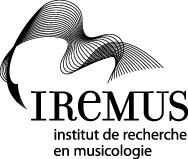WRITINGS
YASAR Kerim
Electrified voices: Media technology and discourse in modern Japan
Edition: Ph.D. Dissertation, Columbia University, 277p.
Date: 2009
Region: JAPAN
Origin: UNITED STATES
Type of media: Grey
Language: English
Editor: M.B.
Comment:
Abstract:
In this dissertation I consider some of the roles that technologies of communication and reproduction have played in the cultural practices and ideologies of post-Meiji Restoration Japan.
I begin with a consideration of the language reforms of the late nineteenth century. The genbun itchi ("unification of speech and writing") movement has received a great deal of attention in recent years, but very little consideration has been given to the fact that the genbun itchi movement took shape in the context of the introduction of the telegraph, the phonograph, and the telephone. These media became vectors for the resurgence of a "residual orality" (to borrow Walter Ong's phrase) that was operative in Japanese culture long before any encounter with the technologies of the West. The telegraph conferred a new utility and, indeed, technological glamour, to the indigenous phonetic kana syllabaries; the telephone and phonograph then allowed the voice and spoken language to be transmitted and, perhaps more importantly, inscribed and archived , thus freeing spoken language from the dual constraints of spatial locality and temporal ephemerality--which in turn transformed the voice into a cultural-material artifact in its own right.
The second chapter considers the changing soundscapes of modernity. In addition to the telephone and the phonograph, the urban Meiji soundscape was transformed not only by the sounds of machines, but also just as importantly, by the importation of Western music. In the Taisho and early Showa periods, radio and sound film would be added to the mix. The human voice, furthermore, took on a new materiality and cultural role as it came to be more widely recorded and transmitted. Naniwabushi narrative ballads, through recordings and radio broadcasts, came to serve the ideology of the state as extended family. Rajio taiso (radio exercise) inaugurated a nationwide regime of bodies moving in sync to the directions of a disembodied voice, consolidating a mechanism of command and control that reached its apotheosis with Hirohito's declaration of surrender in the Pacific War.
The third chapter looks at the representative medium of modernity, cinema, through the prism of the work of Kawabata Yasunari and Yokomitsu Riichi. Kawabata's work is especially appropriate not only for the "cinematic" and imagistic nature of his writing, but also because the Buddhistic monism that constitutes his metaphysical and ontological worldview is astonishingly appropriate (and analogous) to the nature of the cinematic experience. Through a close reading both of Kawabata's critical writings in the late 1920s as well as texts such as Aoi umi, kuroi umi ("Blue Sea, Black Sea") and Suisho genso ("Crystal Fantasies"), I articulate a "Buddhist theory of cinema" that engages with the filmic realism theory of Siegfried Kracauer. Yokomitsu's work, on the other hand, especially his critical writings from the Shinkankakuha (Neo-Perceptionist) period, can yield insights into the relationship between Eisensteinian montage, haikai poetics, and the creation of meaning within modernist aesthetics.
The fourth and final section fast-forwards into the twenty-first century and considers the work of novelist Takahashi Gen'ichiro from the standpoint of what I call the "total simultaneity" of the Internet. Takahashi rereads the history of modern Japanese literature through the prism of present-day media ecology, and in so doing raises a number of interesting questions about both the enabling and destructive capacities of the different media within that ecology. Through a close reading of his novel/literary history/autobiography Nihon bungaku seisuishi (The Rise and Fall of Japanese Literature), I explore how Takahashi dissolves temporal continuity and historical boundaries while at the same time providing a hyper-realistic and pornographic overload of information--mirroring, in many ways, the emergent conceptual and phenomenological terrain of the World Wide Web.





